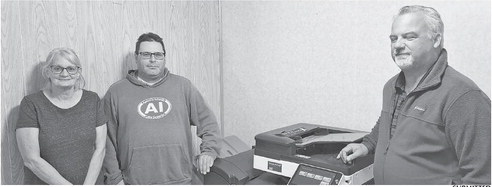Childhood lead exposure still an ongoing concern
During National Lead Poisoning Prevention Week (Oct. 20-26), the Wisconsin Department of Health Services (DHS) is encouraging all Wisconsinites to take steps, to prevent and detect childhood lead exposure, by getting the facts, helping children get tested for lead exposure and checking homes for lead hazards.
“We want to make sure all children can grow up healthy and lead-free,” said Paula Tran, state health officer. “Our state has made sustained progress in reducing childhood lead poisoning; however, too many children across our state, continue to be exposed to lead.”
Earlier this year, the DHS issued updated lead testing recommendations, calling for all children to be tested for exposure to lead, at ages one and two. Children between three and five years old, who have not been previously tested, should also undergo screening for lead poisoning.
Wisconsin communities with high rates of lead exposure, because of the age of housing or other lead hazards,may have additional testing recommendations.
Testing has started to increase, following historic lows during the COVID-19 pandemic, but there may be many more children with lead poisoning, who have not been identified. In 2023, only 40 percent of one and two year olds in Wisconsin, received a blood lead test.
Over the past decade, nearly 27,000 Wisconsin children, under the age of six, have been poisoned by lead.
“Children younger than six, are particularly vulnerable to lead exposure, because their bodies are still developing and growing rapidly,” said Brian Weaver, DHS lead policy adviser. “No amount of lead exposure is safe for a child. Even low levels of lead in blood have been shown to affect a child’s IQ, ability to pay attention and speech development.”
Lead can be found in many places in a child’s environment. The primary source of exposure for children is from cracked or chipped lead-based paint, which was used inside and outside many homes built before 1978. Children are most often exposed by swallowing or breathing in dust created by deteriorating paint as they crawl, play, or put their hands or other objects that may be contaminated with lead dust, into their mouths.
Other common sources of lead exposure include drinking water and soil that becomes contaminated with lead, that is then ingested. Any child can be lead poisoned, but not all children are at the same risk. Children who live in households at, or below, the federal poverty level and those who live in housing built before 1978, are at the greatest risk of lead exposure.
“It is important for everyone to understand the risks of lead exposure and actions they can take, to help put an end to childhood lead poisoning in Wisconsin,” said Weaver. For more information and resources to determine/ address lead levels, visit dhs.wisconsin.gov.

